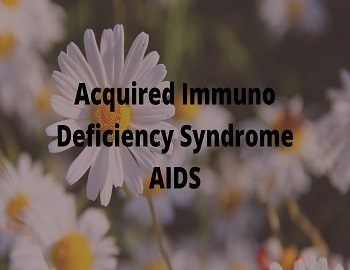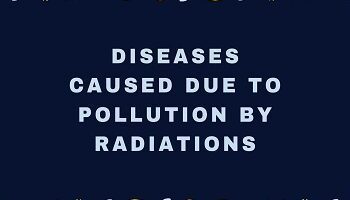Table of Contents
Acquired Immuno Deficiency Syndrome:
AIDS stands for Acquired Immuno Deficiency Syndrome which is characterized by a reduction in the number of helper T-lymphocytes because of infection of HIV (human immunodeficiency virus). Since the AIDS virus reduces the natural immunity of the human body, therefore, the body having AIDS becomes prone to many other infections or diseases. The patients suffering from Acquired Immuno Deficiency Syndrome actually die from other infections or diseases, which attack the body in its greatly weakened state of immunity. This is because the human body cannot resist the disease-causing organisms under those conditions when its natural defence mechanism has been destroyed by HIV.
Routes of Transmission:
- Parenteral Route- It is through blood contact involving unscreened transfusion of blood, tattooing, poorly sterilized dental instruments, infected razors of barbers, sharing of injection needles and organ transplant.
- Sexual Route- It accounts for 85% of HIV infection due to multiple sex partners, prostitutes, homosexuality and artificial insemination. A virus is present in sufficient strength in semen and vaginal secretions of infected persons.
- Transplacental Route: Infection can occur from infected mother to foetus (vertical transmission) across the placenta and to infants through milk (perinatal transmission).
Clinical Symptoms of AIDS:
It may remain symptomless or may have symptoms like weight loss, fever. swollen lymph nodes, chronic diarrhoea, deep sores around mouth and anus etc. A number of opportunistic infections occur because of a breakdown of the body’s immune system and include diseases caused by fungi, bacteria, viruses and protozoa that do not ordinarily cause diseases in a healthy immune system. Death is due to uncontrolled or intractable infections.
AIDS can be diagnosed by detecting HIV in patient serum using ELISA Test (Enzyme Linked Immune Sorbent Assay) or Western Blot technique (culturing of blood and testing plasma for the virus) or PCR Test (Polymerase Chain Reaction). There is no treatment for Acquired Immuno Deficiency Syndrome. No vaccine has been prepared against the AIDS virus till now. The patient should be warned that his blood, semen, urine, tears and saliva may spread AIDS to others and so, AIDS patient is kept under isolation. The laboratory staff should be informed so that special precautions are taken by wearing gloves and plastic aprons. People should be educated about the mode of transmission of AIDS. Avoid the use of shared razors, toothbrushes, needles and syringes. A condom should be used while performing sexual intercourse with unknown persons. Female patients of AIDS should avoid pregnancy. National AIDS Control Programme began in India in 1987. A National AIDS Control Organisation has been set up under the Ministry of Health and Family welfare. Awareness is being imparted through all means of publicity and NGOs in schools, colleges, factories, farms, panchayats, commercial areas etc.
Effects of HIV/AIDS on Environment:
When there is an AIDS epidemic a large number of deaths occur which adversely affect the local environment and natural resources. Due to a large number of deaths, there is a loss of labour and the level of production decreases. With fewer adults, young members with limited resources like land and lack of experience and knowledge find it difficult to look after the perennial crops and prefer crops requiring less labour and time. They devote less time to soil conservation, forestry conservation, especially if there are deaths of professional forest workers. The demand for easily accessible fuelwood increases. More timber is required for making coffins or for pyre making. More water is required for maintaining hygiene in AIDS-affected locality. The HIV carriers are also not able to perform well due to lack of energy and frequent fever and sweating.









Comments (No)